Sellers Home Dining Table
Posted 21 January 2022
This is the introductory page for a paid video series. Want to watch more of this project? Select the best option below to get started.
New projects always inspire the work and give the dynamic of certainty to get started. We hope that this project will excite you as much as it has Paul. Placing it in the dining room at the end of its making has unique chemistry to it like no other. We hope you’ll join Paul on this journey ever deeper into the Sellers’ Home experience of learning and making your pieces.

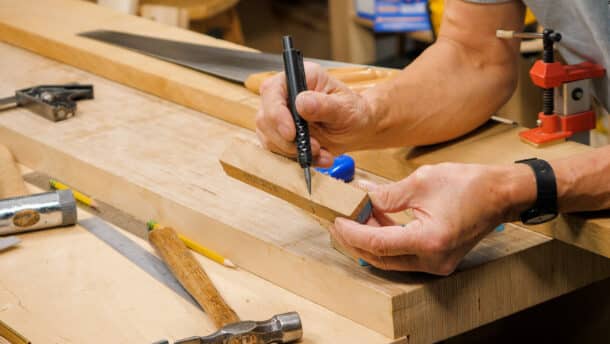
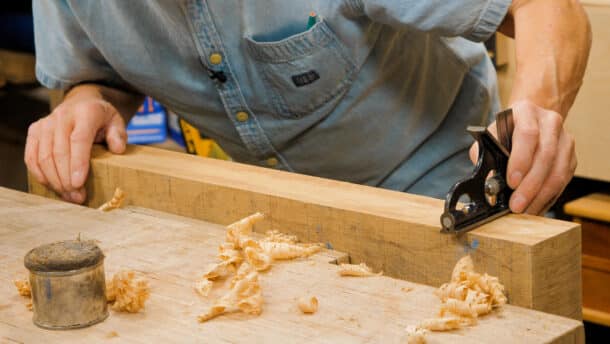
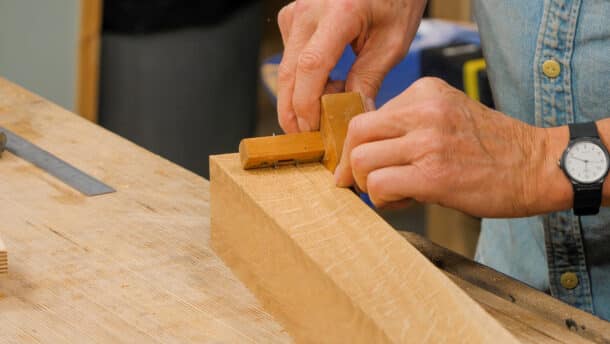
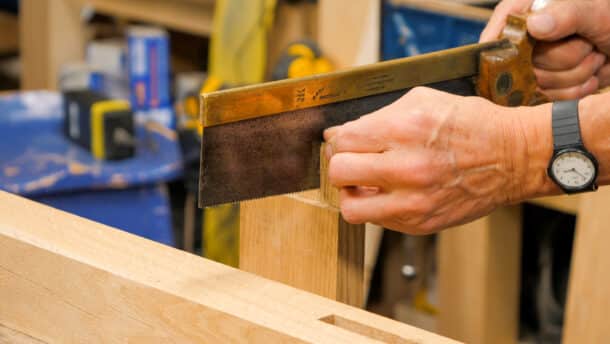
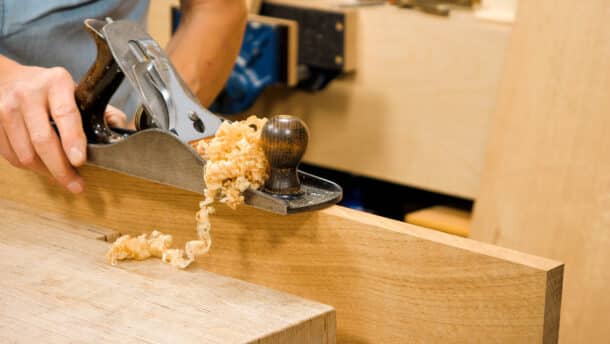
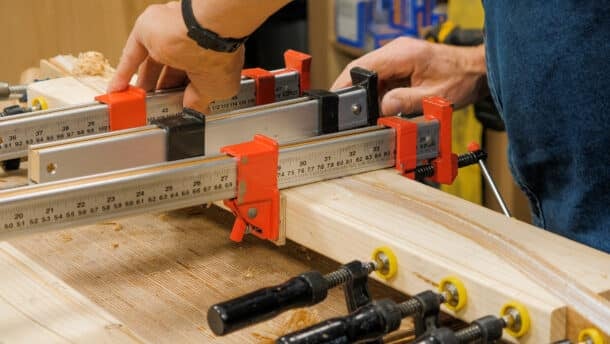
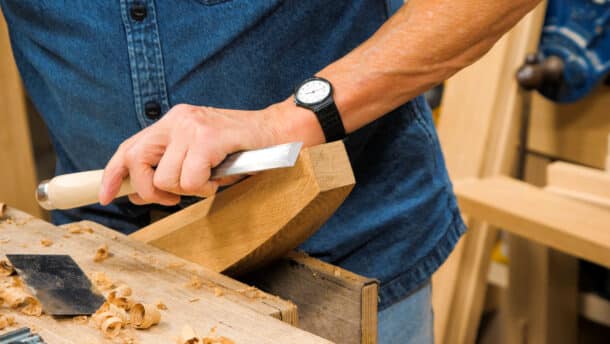
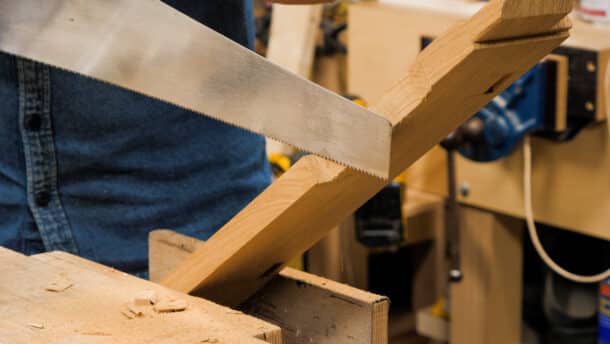
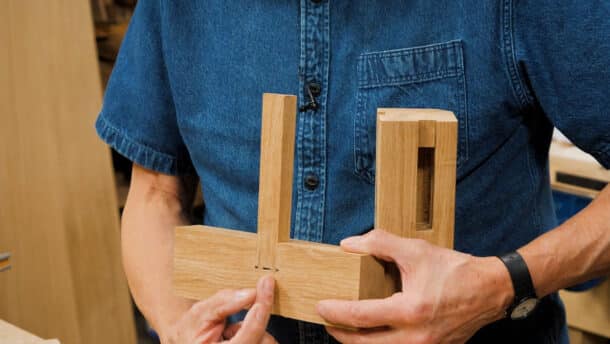
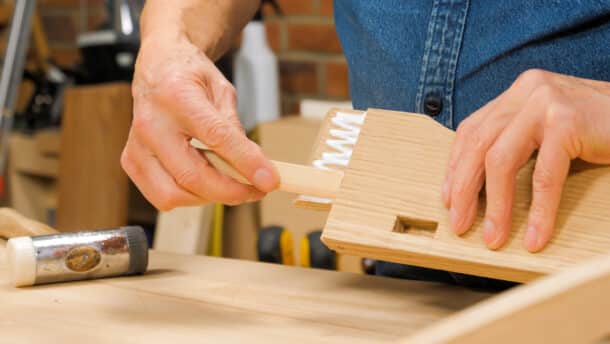
Well this is exciting. I’m enjoying how these blend design and craft.
I may not build it but I will learn from the design and construction!
Just finishing the workbench, look foward to learning more …
Oak wood?
Yes, it is oak
Hi, could you please tell me where the timber yard is that Paul was at. I live in Oxfordshire and would like to take a trip there.
Hi. Was there a reason that Cherry was used on the other pieces and Oak on this table?
No particular reason.
What is a good cabinet rasp to purchase? I have an old one that is really rough and leaves horrendous grooves. Should I get a medium and use it for everything (more economical) or should I get 1 each fine and rough?
Here’s our rasp buying guide on common woodworking:
https://commonwoodworking.com/buying-a-rasp/
This project (but Sellers Home in general) is such an invaluable series already. It’s really insightful to see Paul pick out wood, make choices and compromises and changes when dealing with the changing nature of the wood, pick up tips on what to do differently but also see similarities in how I do things.
Really enjoying just watching the work happen as well. Seeing the care and attention put in and the pleasure got out of simply choosing and dimensioning stock.
Looking forward to the rest of it.
For what it’s worth, Taylor Tools in the US sells 5/8″ (actually 16mm) Narex mortise chisels for $30. I know Mr. Sellers doesn’t typically use mortise chisels, but I didn’t have a 5/8″ chisel so I decided to get the mortise chisel. Got it today, and out of the box I chopped a quick mortise in some pine, and it worked like a dream. Just an observation.
Can I extend the length of the table up to 2,5~3mt without extra legs in the center or what should I add/change to this design to avoid any sagging?
There are quite a few factors that you would have to take into account if you were to scale it up to the size you are talking about e.g type of wood, thickness of wood and how you would use the table. We have come up with a good starting point for you but when you make significant variations to a design it is hard to advise.
Long tables……. over, say, 2 M in length may not be capable of being moved into a standard home, unless you live in somewhere with enormous, very high, double doors.
In general terms, the internal height of a standard door frame usually determines the length so that it can be moved end-upwards. Some dining-rooms are at the ends of passages with corners that don’t allow a lot of room for swiveling furniture.
However, confronted with that problem some years ago, and on the premise that it was only occasionally used as a ten-or-twelve-seater table, for conferences etc., I made a standard length table about six feet long by three feet, plus two matching half sized tables at three feet square each that could be added either at the ends to make one long one at twelve feet or either side to made one large six foot-square table. At other times, they were used individually.
Using an additional table at the end of the main one is something I have done. But One has to store them and remove everything one has piled on it (unless one can knock it down).
There are a few design of extensible tables but, I am afraid, not (directly?) compatible with the diagonal braces in this design.
Although, instead of screwing the braces under the table-top, one could add two horizontal rails between the two long aprons and screw the braces to them (of course then the braces would have to be mortised lower in the feet or their shape adapted). That would leave some place for the chosen extension method.
About extension.
Making dovetail slides by hand would be difficult.
Another approach which doesn’t need to buy hardware and seems easier to make by hand is the “draw leaf table/ Dutch pull out table”.
Google “draw leaf table/ Dutch pull out table” on the blog “A woodworker’s musings” to see how it works.
Thank you actually the plan is to make a gaming/dining table. My house is big enough to accommodate the table. (With some double glass doors) The design will be nothing alike of this table but It helped me some ideas for the structure of the table. (Design is still ongoing!) Thank you all!
I am starting to make this table and was wondering if the laminated anchors under the table top are absolutely necessary. I don’t own a bandsaw so resawing that many pieces for the lamination would be hard and wasteful as Paul alluded in one of the videos in the series.